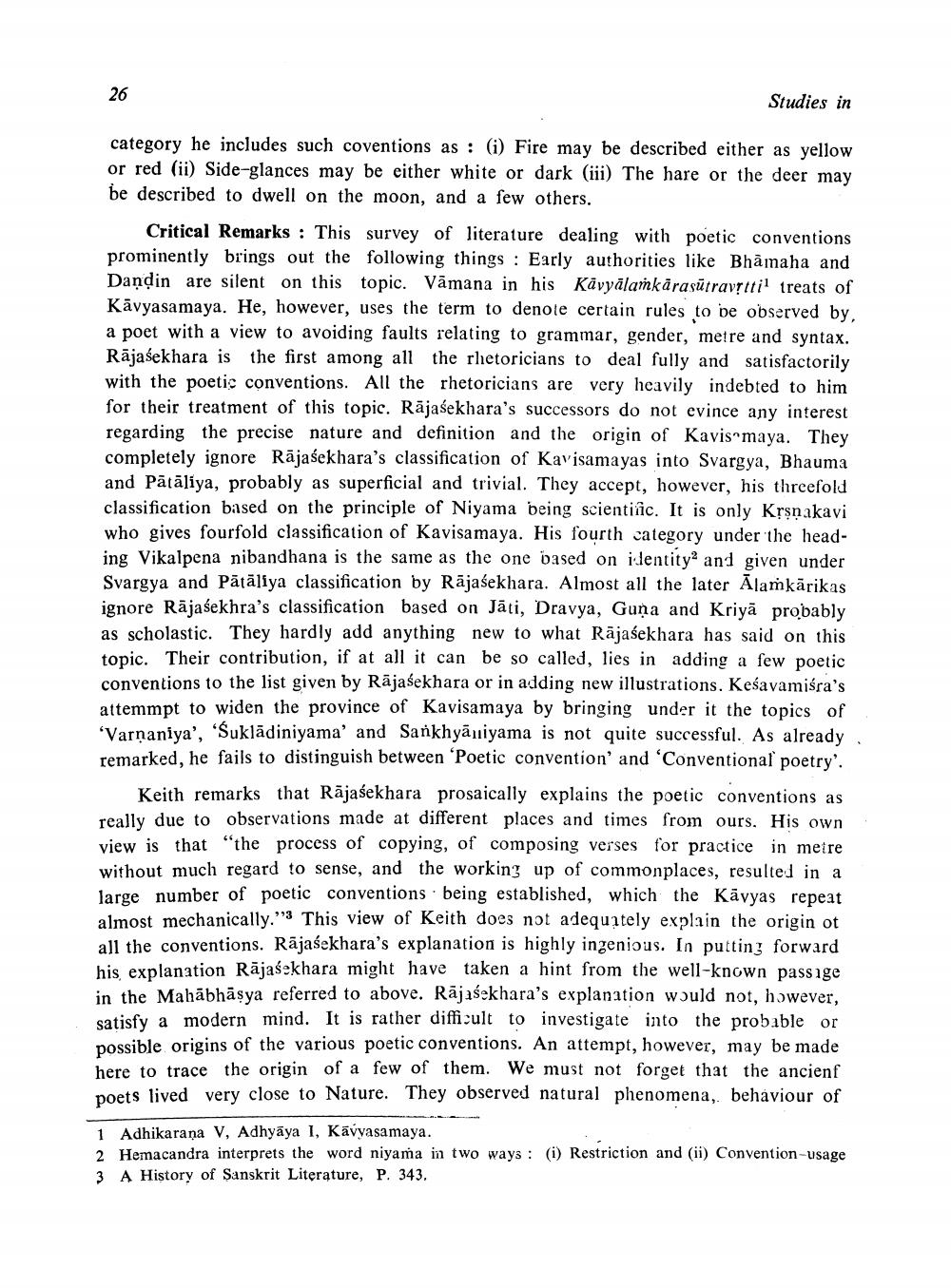________________
26
Studies in
category he includes such coventions as : (i) Fire may be described either as yellow or red (ii) Side-glances may be either white or dark (iii) The hare or the deer may be described to dwell on the moon, and a few others.
Critical Remarks : This survey of literature dealing with poetic conventions prominently brings out the following things : Early authorities like Bhāmaha and Daņdin are silent on this topic. Vāmana in his Kāvyālamkārasūtravștti treats of Kavyasamaya. He, however, uses the term to denote certain rules to be observed by, a poet with a view to avoiding faults relating to grammar, gender, merre and syntax. Rājasekhara is the first among all the rhetoricians to deal fully and satisfactorily with the poetic conventions. All the rhetoricians are very heavily indebted to him for their treatment of this topic. Rājasekhara's successors do not evince any interest regarding the precise nature and definition and the origin of Kavisamaya. They completely ignore Rājasekhara's classification of Kavisamayas into Svargya, Bhauma and Pātāliya, probably as superficial and trivial. They accept, however, his threefold classification based on the principle of Niyama being scientific. It is only Krsnakavi who gives fourfold classification of Kavisamaya. His fourth category under the heading Vikalpena nibandhana is the same as the one based on identity and given under Svargya and Pātāliya classification by Rājasekhara. Almost all the later Alamkārikas ignore Rājasekhra's classification based on Jāti, Dravya, Guna and Kriyā probably as scholastic. They hardly add anything new to what Rājasekhara has said on this topic. Their contribution, if at all it can be so called, lies in adding a few poetic conventions to the list given by Rājasekhara or in adding new illustrations. Keśavamiśra's attemmpt to widen the province of Kavisamaya by bringing under it the topics of "Varnaniya', 'Suklādiniyama' and Sankhyāniyama is not quite successful. As already remarked, he fails to distinguish between Poetic convention' and 'Conventional poetry
Keith remarks that Rājasekhara prosaically explains the poetic conventions as really due to observations made at different places and times from ours. His own view is that "the process of copying, of composing verses for practice in metre without much regard to sense, and the working up of commonplaces, resulted in a large number of poetic conventions being established, which the Kävyas repeat almost mechanically."3 This view of Keith does not adequately explain the origin ot all the conventions. Rājasekhara's explanation is highly ingenious. In putting forward his explanation Rājasekhara might have taken a hint from the well-known passage in the Mahābhāsya referred to above. Rajasekhara's explanation would not, however, satisfy a modern mind. It is rather difficult to investigate into the probable or possible origins of the various poetic conventions. An attempt, however, may be made here to trace the origin of a few of them. We must not forget that the ancient poets lived very close to Nature. They observed natural phenomena, behaviour of
1 Adhikarana V, Adhyâya 1, Kavyasamaya. 2 Hemacandra interprets the word niyama in two ways: (i) Restriction and (ii) Convention-usage 3 A History of Sanskrit Literature, P. 343.




